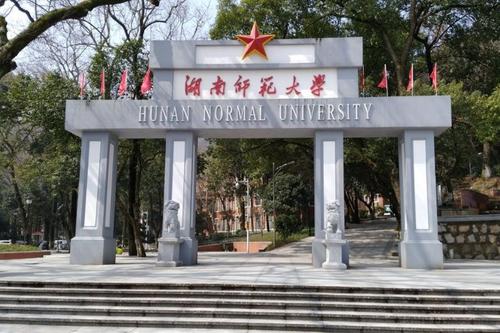2019年4月高等教育自学考试《外语教学法》试题
课程代码:00833
I. Multiple choices: (1%x20 = 20%)
In this section, you are given 20 questions, beneath each of which are four choices marked A, B, C and D. You are to make the best choice and blacken the corresponding letter A, B, C or D on the ANSWER SHEET. One point is given to each correct choice.
1. divided the mind into conscious and unconscious mind and he was the first psychologist that made a careful study of the latter.
A. Chomsky B. Freud C. Skinner D. Watson
2. The habit-formation theory was put forward by a group of behaviorists with as their representative.
A. J. Schumann B.R. Anderson C.B.E. Skinner D.S. Krashen
3. was the first one that helped to make a profession the teaching of English as a second/foreign language.
A. Daniel Jones B. Harold Palmer C. Michael West D.C.E. Eckersley
4. In a Grammar-Translation classroom, is regarded as the core of language, so it is the main content in foreign language teaching.
A. vocabulary B. syntax C. grammar D. phonetics
5. In the Grammar-Translation Method, the is the basic unit of language teaching and leaming.
A. sentence B. word C. sound D. morpheme
6. Students with the Grammar-Translation Method are expected to memorize and grammatical rules.
A. sentence patterns B. principles for translation
C. structures D. bilingual word lists
7. The new world in the century made the Direct Method not only a necessity but also a possibility.
A. early 18th B. late 18th C. early 19th D. late 19th
8. The neogrammarians, represented by , formed the linguistic base of the Direct Method.
A. H. Paul B.W.M. Wundt C.J.A. Comenius D.F. Gouin
9. The syllabus used in the Direct Method is arranged semantically according to
A. situations or topics B. textbooks or materials
C. ideas or concepts D. students or learners
10. In both the Direct Method and the Oral Approach, grammar is taught
A. deductively B. inductively
C. positively D. negatively
11. linguistics offered the foundations for the Audiolingual Method.
A. Functional B. Structural C. Cognitive D. Generative
12. Audiolingualism reached its period of most widespread use in the
A. 1930s B. 1940s C. 1950s D. 1960s
13. The Cognitive Approach believes
A. language learning is habit formation
B. language learning is behavior
C. language learning is a mental process
D. language learning is natural acquisition
14. Which of the following statements about schema is tree?
A. It is an important concept in Noam Chomsky's theory.
B. It describes an active organization of future action.
C. It refers to the mental framework of past experience.
D. It stores in the working memory.
15. One of the advantages of the Cognitive Approach is that
A. it encourages meaning and creativity
B. it emphasizes language form rather than language content
C. it focuses on drill practice
D. it relies on dialogues
16. The Natural Approach is based on the following hypotheses EXCEPT
A. the acquisition-learning hypothesis B. the monitor hypothesis
C. the natural order hypothesis D. the noticing hypothesis
17. was instrumental in setting out the fundamental consideration for a
functional-notional approach to syllabus design based on communicative criteria.
A. Tracy Terrell B. Stephen Krashen
C. Charles Fries D.D.A. Wilkins
18. According to Halliday, social context of language use can be analyzed in terms of three
factors EXCEPT
A. the field of discourse B. the tenor of discourse
C. the mode of discourse D. the function of discourse
19. What materials are not typical of the Communicative Approach?
A. Sentence patterns. B. Pictures.
C. Games. D. Signs.
20. What do these three approaches share, the Silent Way, Community Language Learning, and Suggesopaedia?
A. They all lay emphasis on the individual and on the personal learning strategies.
B. Teachers are encouraged to give as much intrusion into the learning process of
students as possible.
C. They don't endeavor to involve the whole person of the students.
D. All view the learning of a second language as quite similar to the learning of the first.
II. Filling Blanks: ( 1%×20 = 20%)
In this section, there are 20 statements with 20 blanks. You are to fill each blank with ONE appropriate word on the ANSWER SHEET. One point is given to each blank.
21. Chomsky has made the distinction between linguistic competence and linguistic
22. In their study of language, traditional linguists gave priority to the form and took words as their starting point.
23. Traditional linguists emphasized such matters as , the purity of a language, literary excellence and the use of Latin models.
24. In the Grammar-Translation Method, the teaching materials are arranged according to system.
25. An ultimate purpose of learning a foreign language in a Grammar-Translation classroom is to enable the learners to read and translate its
26. In the Direct Method, grammar is learned through and speaking activities.
27. In the Direct Method, the most frequently used techniques of consolidation are , purposeful tasks and graded composition.
28. Correct and grammar are emphasized by the Direct Methodologists.
29. Palmer, together with Michael West and other specialists, produced a guide to the English
needed for teaching English as a foreign language.
30. The Oral Approach employs for presenting new sentence patterns and drill-based manner of practicing them.
31. The Audiolingual Method uses as the main form of language presentation and drills as the main training techniques.
32. Noam Chomsky rejected the approach to language description as well as the behaviourist theory of language learning.
33. According to Piaget, is the process by which we modify what we already know to take into account new information.
34. J.B. Bruner emphasizes active of knowledge through experience with the environment.
35. The Cognitive Approach classroom teaching often follows three procedures: introduction of new materials, and application activities.
36. The American psychologist Carroll interpreted the Cognitive Approach as a "modified, up-to-date grammar theory."
37. According to the Natural Approach, language acquisition activities are divided into four groups: affective-humanistic, problem-solving, and content activities.
38. The Approach has been developed particularly by British applied linguists as a reaction against grammar-based approaches.
39. An gap exists when one person in the exchange knows something that the other person doesn't know and he wants to know.
40. The Silent Way takes a approach to the organization of language to be taught.
III. Matching: (1%×10 = 10%)
This section consists of two groups of pairs listed in two columns, A and B. You are to match the one marked ①, ②, ③, ④, or ⑤ in Column A with the one marked a, b,c, d or e in Column B on the ANSWER SHEET. One point is given to each pair you match correctly.
41.
A. Theories | B. Founders/Representatives |
① Transformational Generative Linguistics | a. M. A. K. Halliday |
② Functional Linguistics | b. Leonard Bloomfield |
③ American Structuralism | b. Sigmund Freud |
④ Psychoanalysis | d. J. B. Watson |
⑤ Behaviorism | e. Noam Chomsky |
42.
A. Terms | B. Advocates |
① competence | a. Charles Fries |
② schema | b. Stephen Krashen |
③ comprehensible input | c. D. A. Wilkins |
④ structural linguistics | d. Noam Chomsky |
⑤ Notional-Functional Syllabus | e. J. Piaget |
IV. Questions for Brief Answers in English: (5%×6 = 30%)
In this section there are questions which you are required to answer briefly on the ANSWER SHEET. Five points are given to each question.
43. Name five theories of second language acquisition.
44. What are the four objectives involved in the Grammar-Translation Method?
45. Name five techniques that a Direct Method teacher is usually found using.
46. Why are teachers required to tell the learner about the language, according to the Cognitive Approach?
47. What guidelines does the Natural Approach set up for classroom practice?
48. What features do truly communicative activities have?
V. Questions for Long Answers in English: (10%×2 = 20% )
The two questions in this section are to be answered on the basis of your own teaching experience as well as the theoretical knowledge you've learned on the ANSWER SHEET. Ten points are given to each question.
49. What are disadvantages of the Grammar-Translation Method?
50. What contributions does the Audiolingual Approach make to language teaching?



